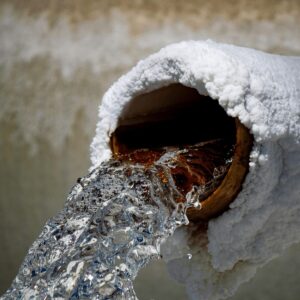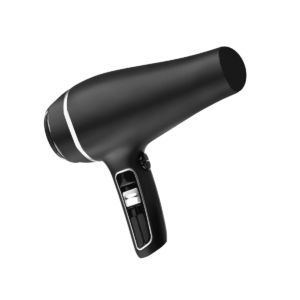
This guide will walk you through how to identify frozen pipes, the safe methods for thawing them, what actions to avoid, and when it’s time to call in a professional.
How to Tell if Your Pipes Are Frozen
Frozen pipes don’t always burst immediately. Catching the problem early is key to preventing a disaster. If you know what to look for, the warning signs are often clear.
Key Signs of a Frozen Pipe:
- No Water or a Slow Trickle: The most common first sign is turning on a faucet and getting little to no water. This indicates an ice blockage somewhere in the plumbing line.
- Visible Frost: Check exposed pipes in colder areas like basements, crawl spaces, attics, or garages. A layer of frost or frozen condensation is a definite red flag.
- Strange Smells: An ice blockage can trap odors from your drainage system, causing unpleasant smells to come up through sinks or floor drains.
- Bulging or Deformed Pipes: As water freezes, it expands. If you see a pipe that is bulging or has developed a crack, it means pressure is dangerously high and a burst is likely imminent.
Your First Response: Act Quickly
If you notice any of these signs, your first step should be to shut off the main water supply to your home. This action won’t thaw the pipe, but it will prevent a major flood if the pipe is already cracked or bursts during the thawing process. Once the water is off, you can focus on safely addressing the freeze.
Safe Methods for Thawing a Frozen Pipe
The goal is to apply gentle, consistent heat to melt the ice slowly. Using extreme

heat too quickly can cause the pipe to expand and rupture, turning a small problem into a big one.
After shutting off the main water supply, follow these steps:
- Open the Faucet: Open the faucet connected to the frozen pipe, even if no water is coming out. This helps relieve built-up pressure and gives the melting ice and steam a path to escape.
- Apply Gentle Heat: Use a hairdryer on a low setting, an electric heating pad, or a portable space heater to warm the frozen section. Keep the heat source moving back and forth along the pipe to ensure even warming. Never concentrate intense heat on a single spot.
- Start Near the Faucet: Begin applying heat closest to the open faucet and work your way back toward the blockage. This allows the melting water to drain out properly instead of getting trapped behind the ice.
- Warm the Room: Open cabinet doors under sinks to let warmer air from your home circulate around the plumbing. You can also slightly raise the thermostat in your house to help warm up pipes located in exterior walls.
What NOT to Do When Thawing Pipes
What you don’t do is just as important as what you do. Some common DIY methods create serious safety hazards.
Avoid these mistakes:
- Never Use an Open Flame: Do not use a blowtorch, propane heater, or any device with an open flame. This poses a significant fire risk and can damage the pipe itself, potentially releasing toxic fumes.
- Don’t Leave Heaters Unattended: If you use a space heater, monitor it closely and keep it away from flammable materials.
- Don’t Ignore the Problem: Waiting for pipes to thaw on their own is a gamble. Uneven thawing can increase pressure and lead to a burst. Acting promptly is always the safer choice.
When Should You Call a Professional?
While some frozen pipes are accessible and easy to thaw, many are not. Attempting to handle a complex freeze on your own can lead to further damage. It’s time to call for professional help if:
- The frozen pipe is located behind a wall, in a ceiling, or underground.
- You are unable to locate the frozen section.
- Your efforts to thaw the pipe are not working after a reasonable amount of time.
- The pipe has already burst.
At Reynolds Restoration Services, we specialize in handling frozen and burst pipe emergencies. Our technicians use advanced equipment to safely locate and thaw frozen pipes with controlled heat, minimizing the risk of further damage. If a pipe has already ruptured, our team is available 24/7 to respond quickly.
Our comprehensive water damage services include:
- Emergency Water Extraction: We immediately remove standing water to prevent it from seeping into your home’s structure.
- Drying and Dehumidification: Our industrial-grade equipment dries out affected areas to prevent mold growth and protect your indoor air quality.
- Structural Repairs: We can repair or reconstruct any damaged drywall, flooring, or insulation to restore your home to its pre-loss condition.
- Expert Guidance: Our team provides advice on how to better insulate and protect your plumbing system against future freezes.
With 20 years of experience serving homeowners and businesses in Pennsylvania, Maryland, and Delaware, Reynolds Restoration Services has the expertise to manage your emergency with care and professionalism. If you’re facing a frozen or burst pipe, don’t wait. Contact us today for a rapid response.

President of Reynolds Restoration Services. Over 20 years of experience in the emergency restoration industry.

